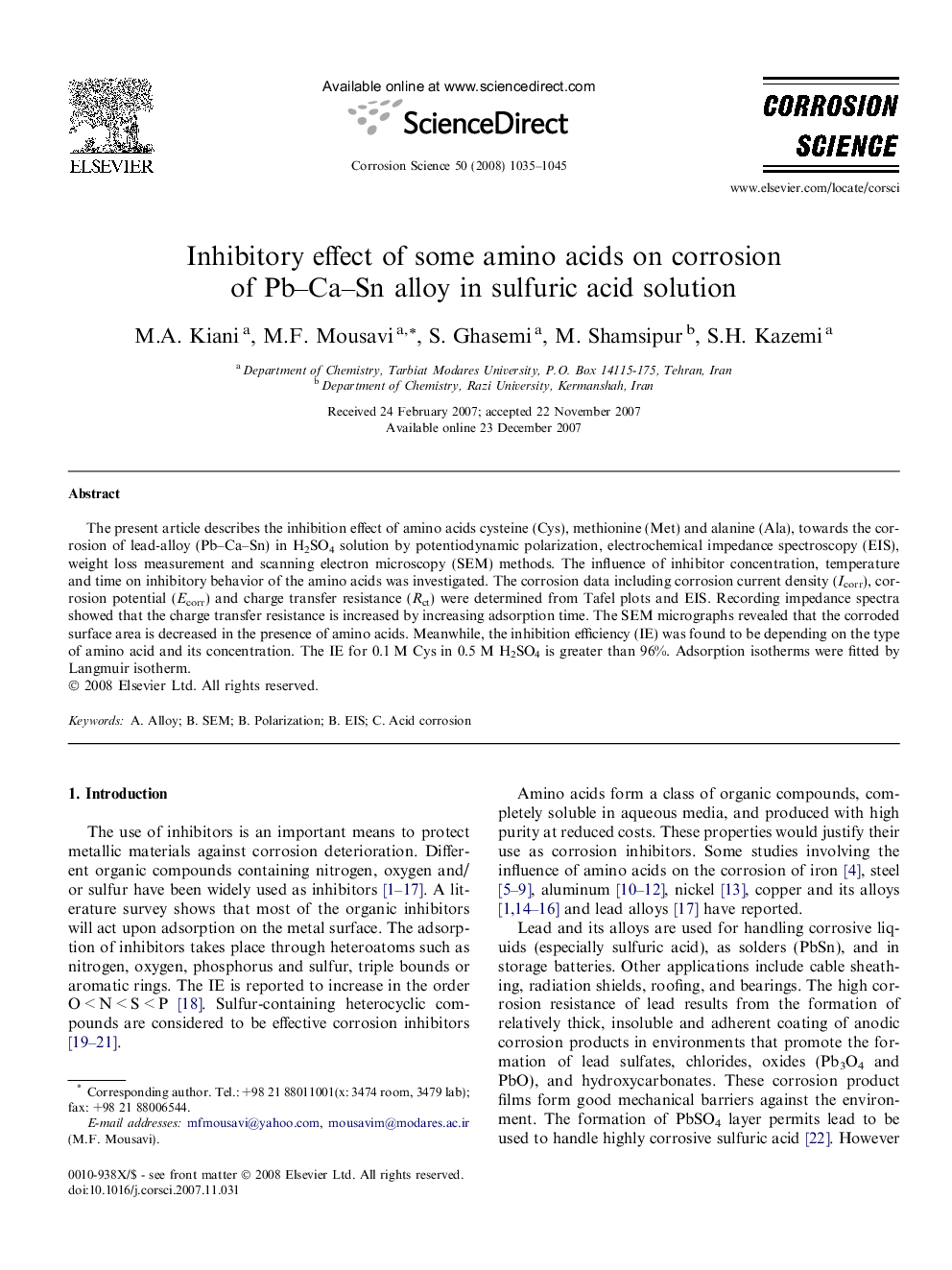| Article ID | Journal | Published Year | Pages | File Type |
|---|---|---|---|---|
| 1471928 | Corrosion Science | 2008 | 11 Pages |
The present article describes the inhibition effect of amino acids cysteine (Cys), methionine (Met) and alanine (Ala), towards the corrosion of lead-alloy (Pb–Ca–Sn) in H2SO4 solution by potentiodynamic polarization, electrochemical impedance spectroscopy (EIS), weight loss measurement and scanning electron microscopy (SEM) methods. The influence of inhibitor concentration, temperature and time on inhibitory behavior of the amino acids was investigated. The corrosion data including corrosion current density (Icorr), corrosion potential (Ecorr) and charge transfer resistance (Rct) were determined from Tafel plots and EIS. Recording impedance spectra showed that the charge transfer resistance is increased by increasing adsorption time. The SEM micrographs revealed that the corroded surface area is decreased in the presence of amino acids. Meanwhile, the inhibition efficiency (IE) was found to be depending on the type of amino acid and its concentration. The IE for 0.1 M Cys in 0.5 M H2SO4 is greater than 96%. Adsorption isotherms were fitted by Langmuir isotherm.
